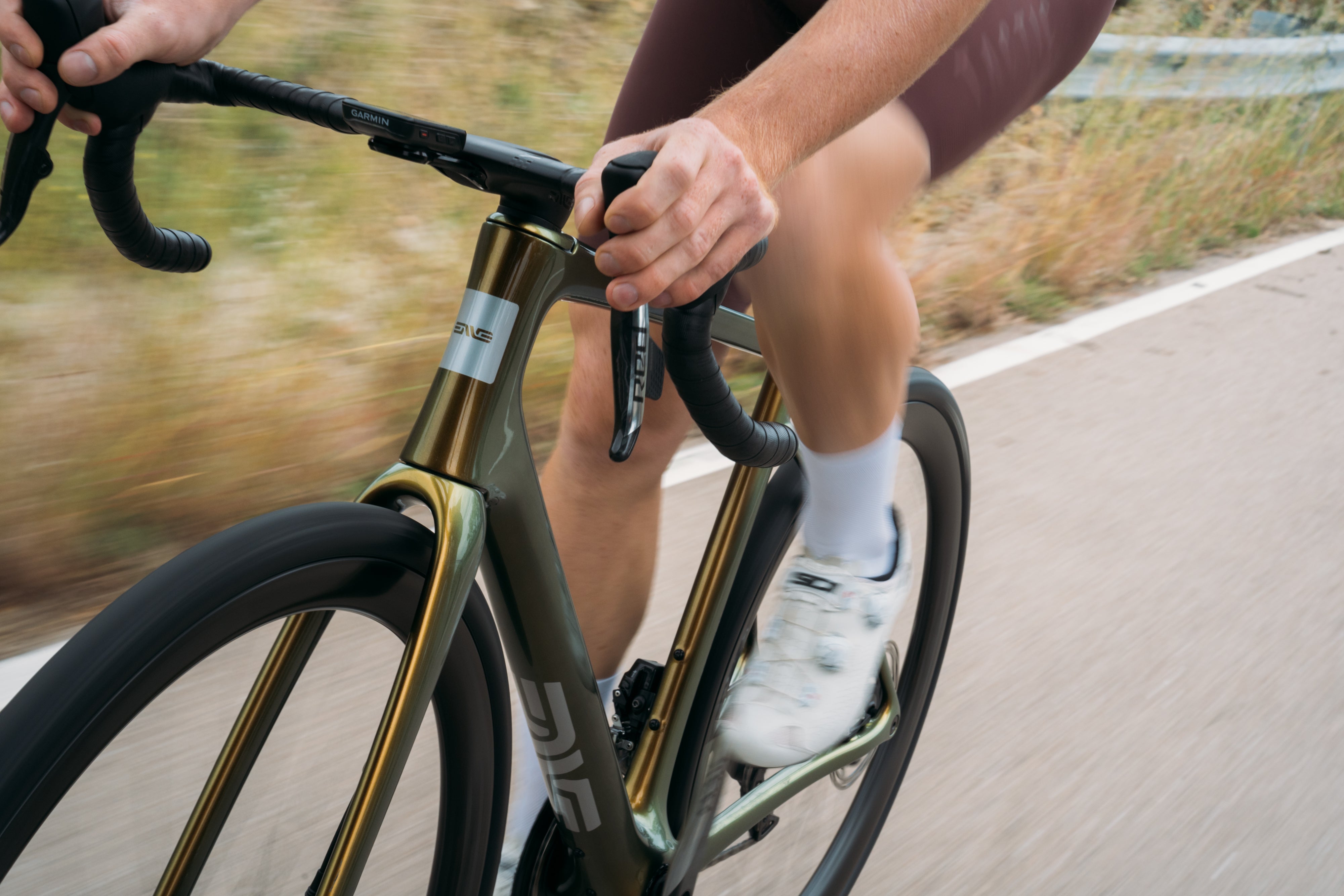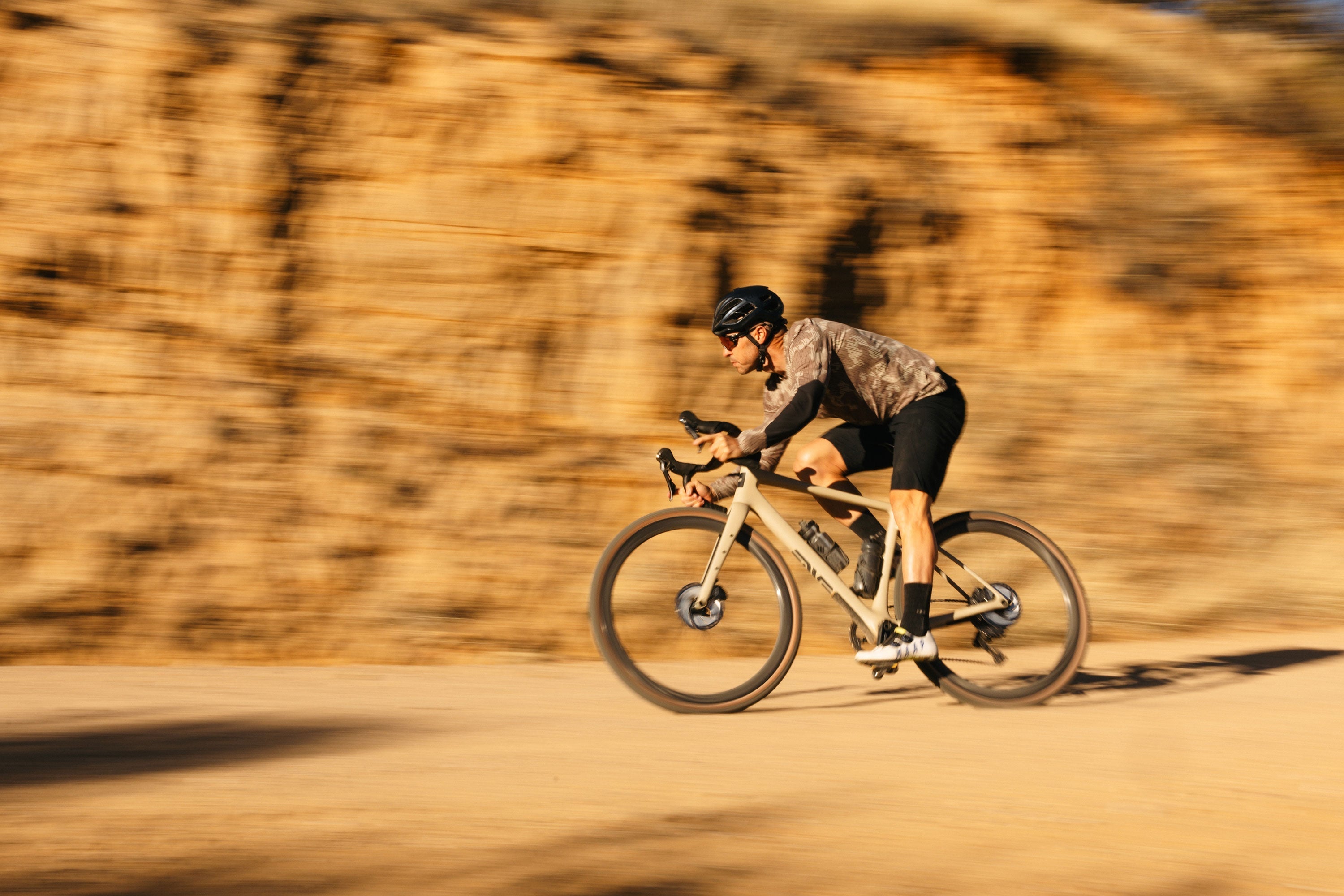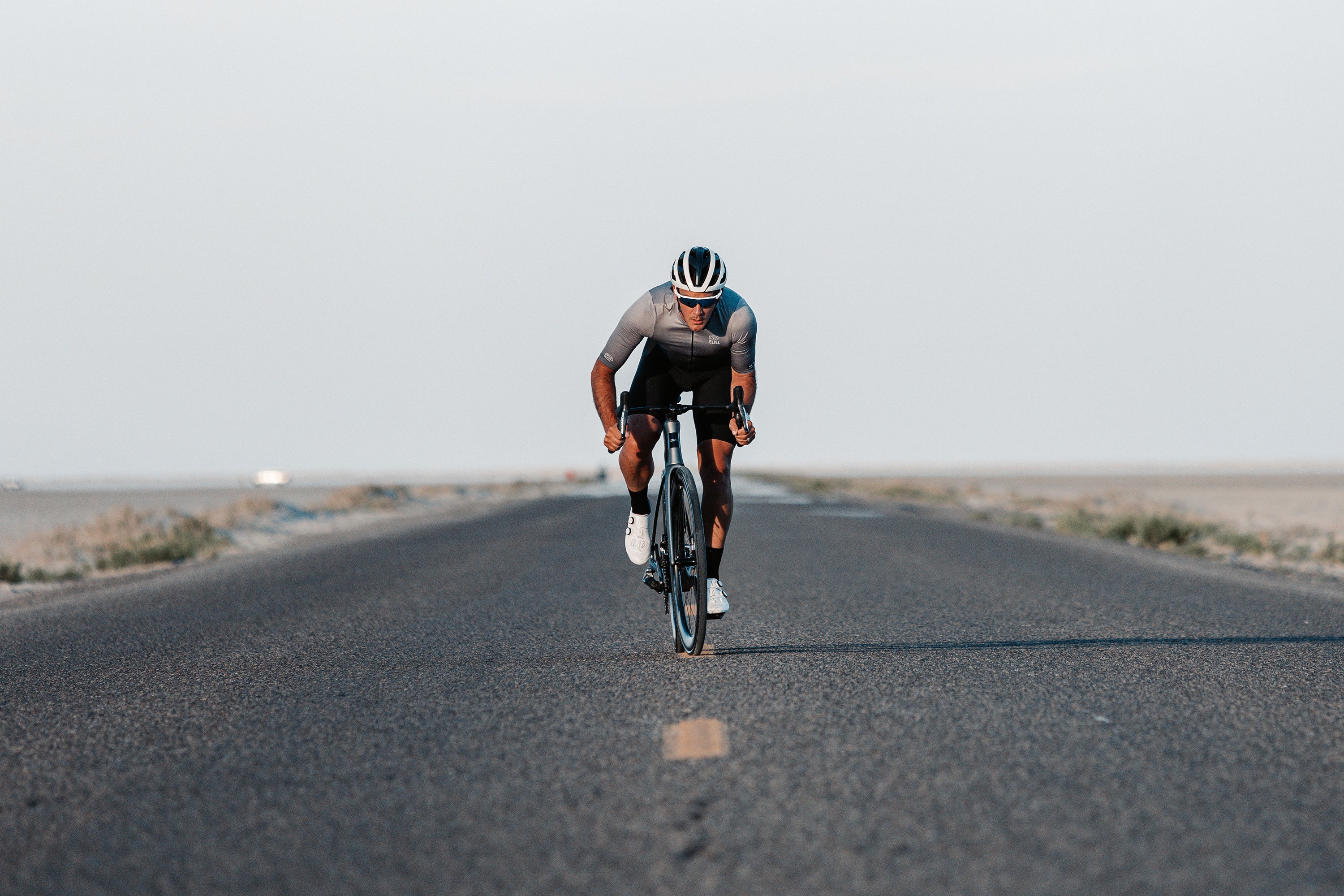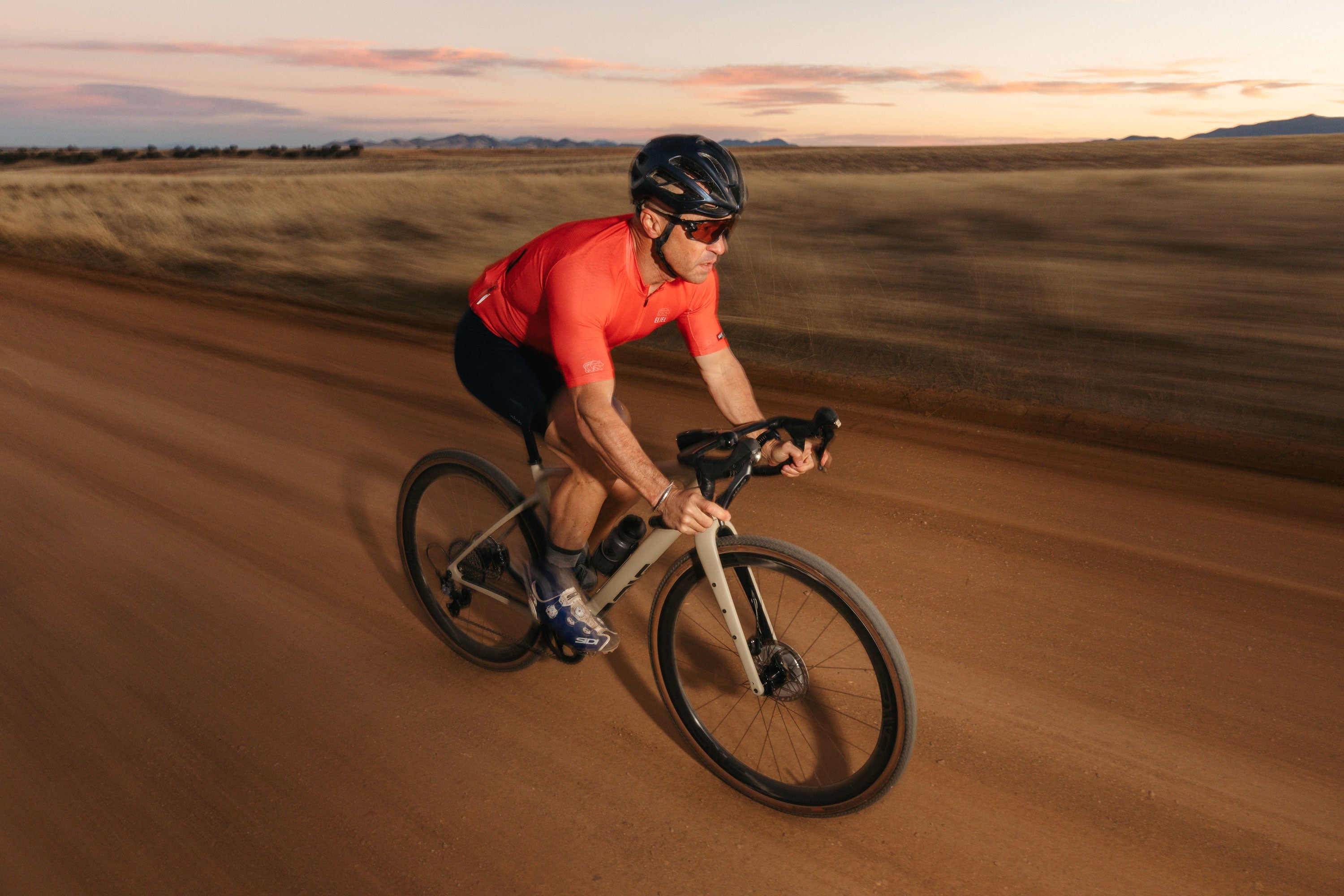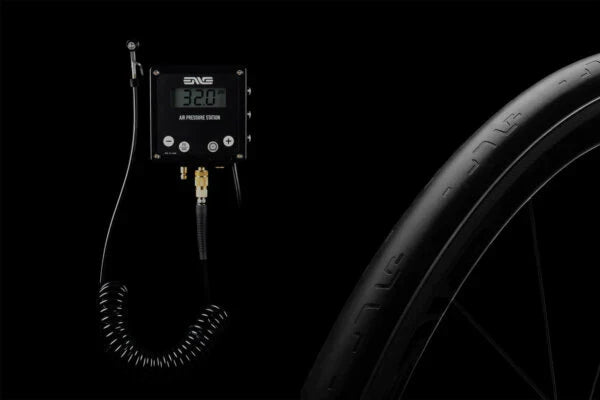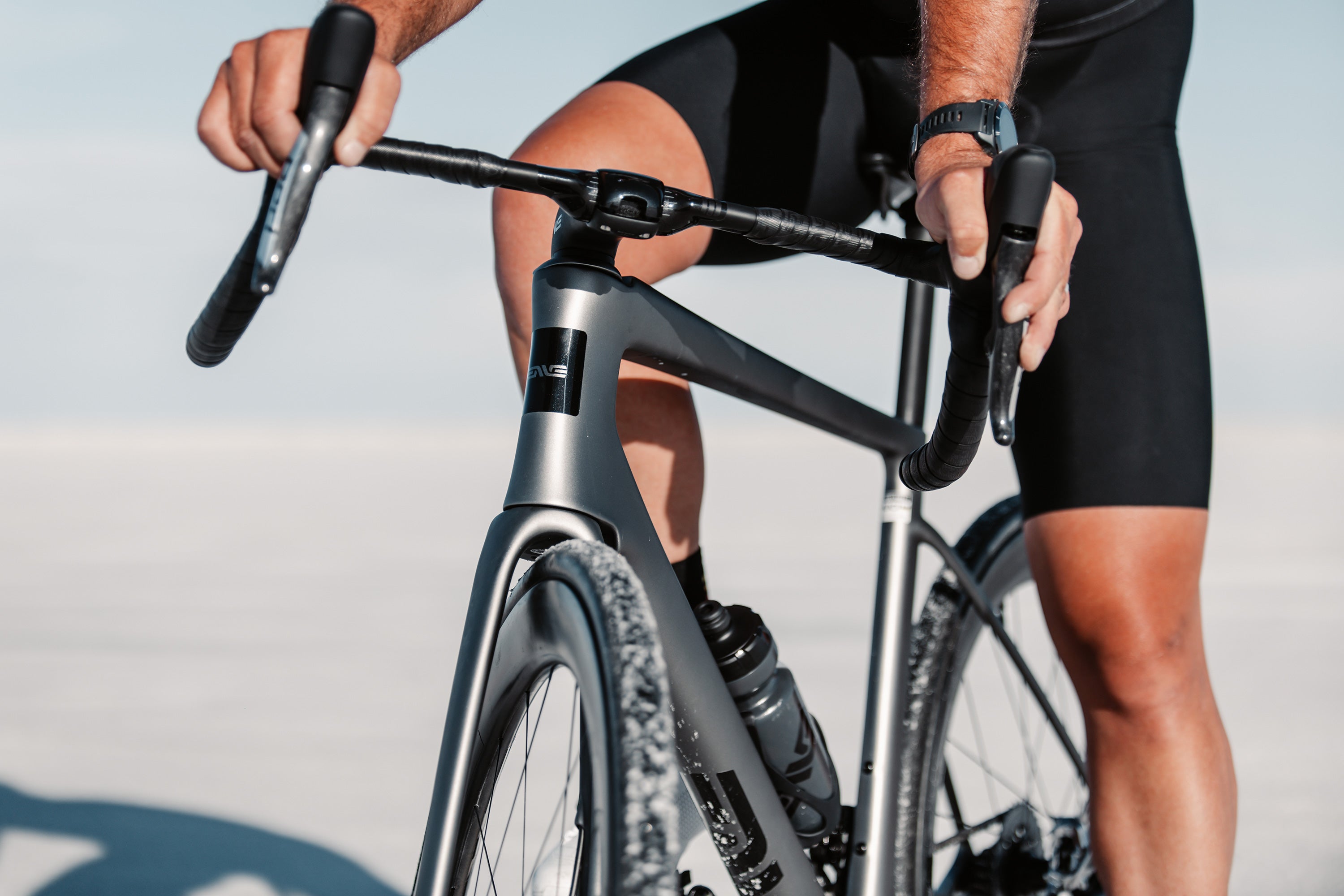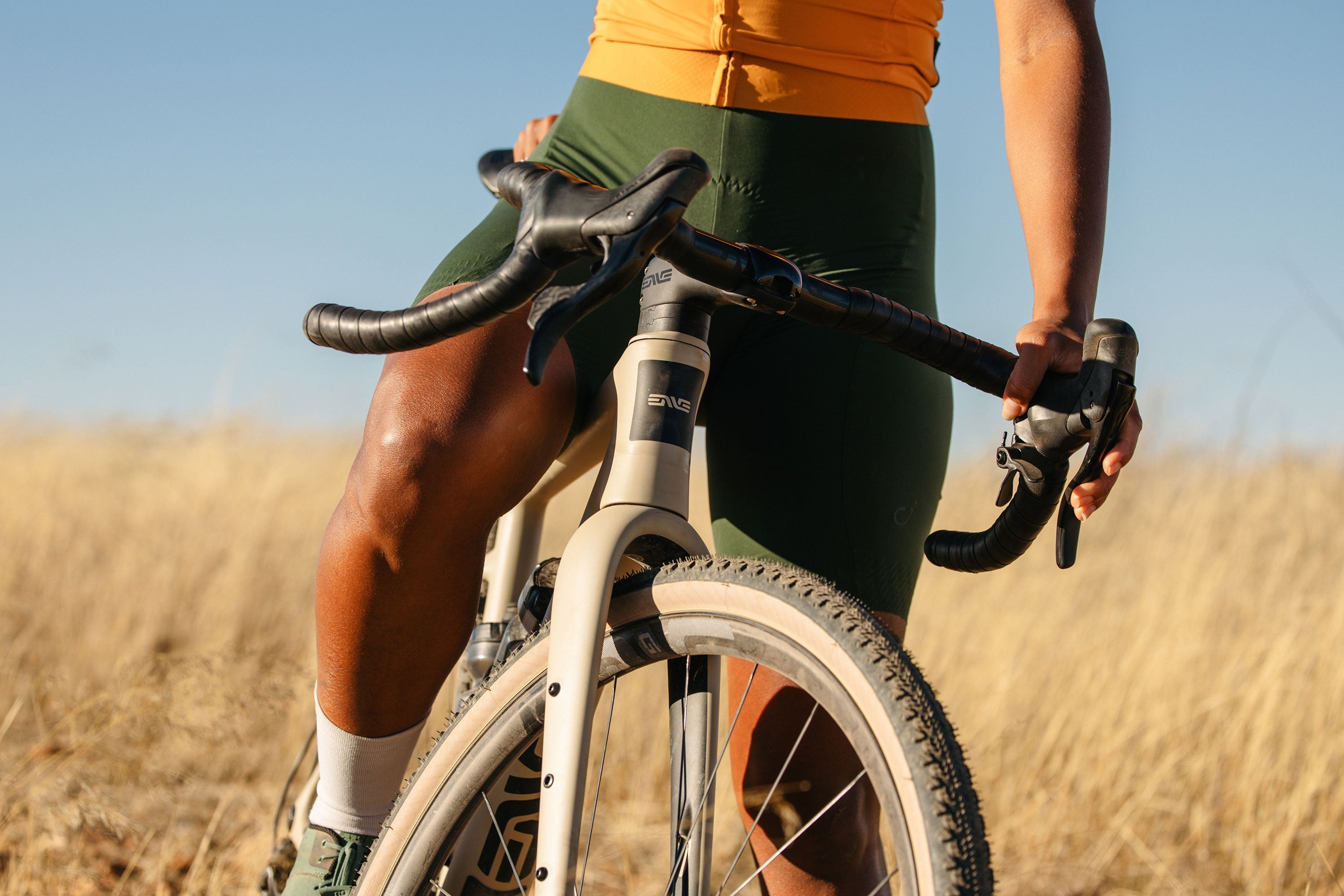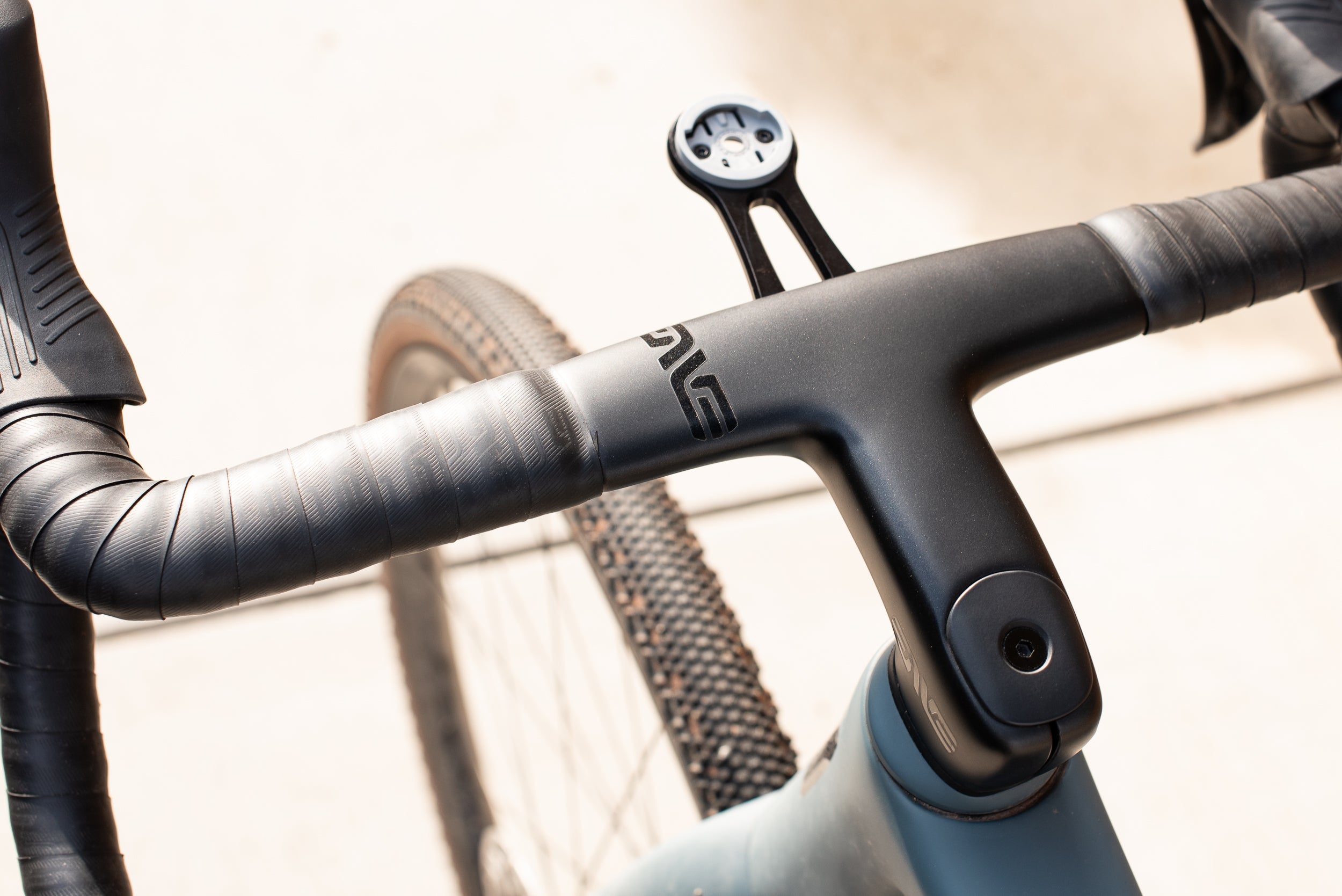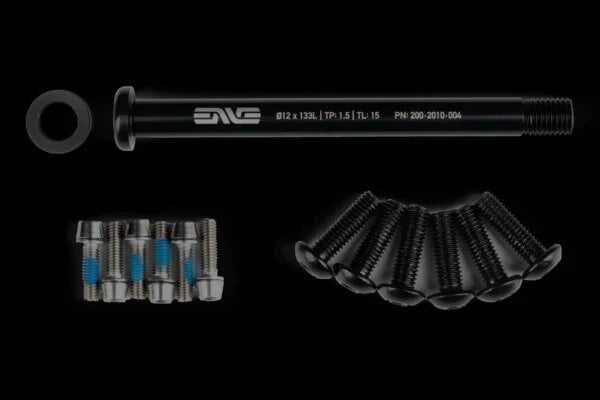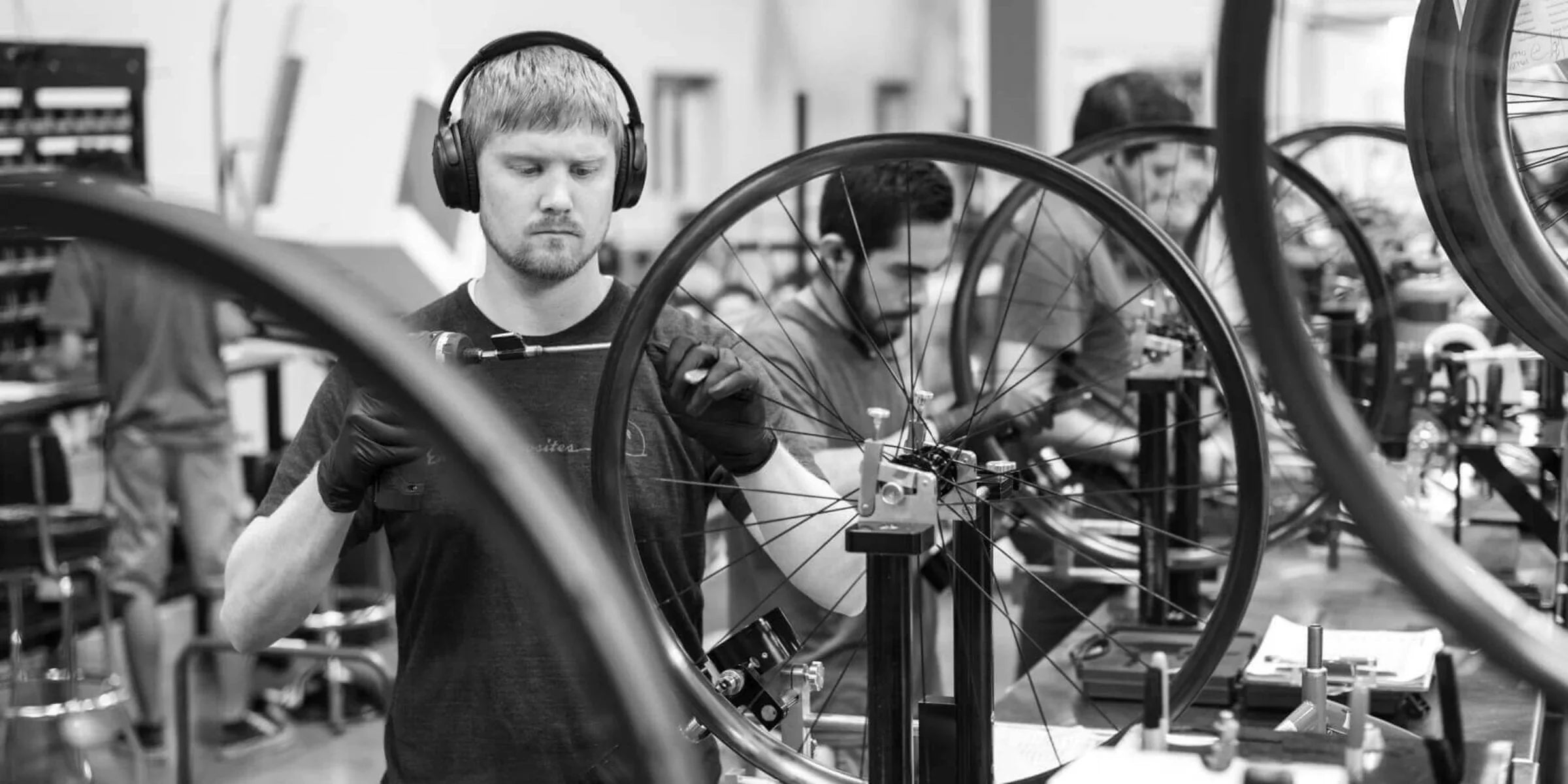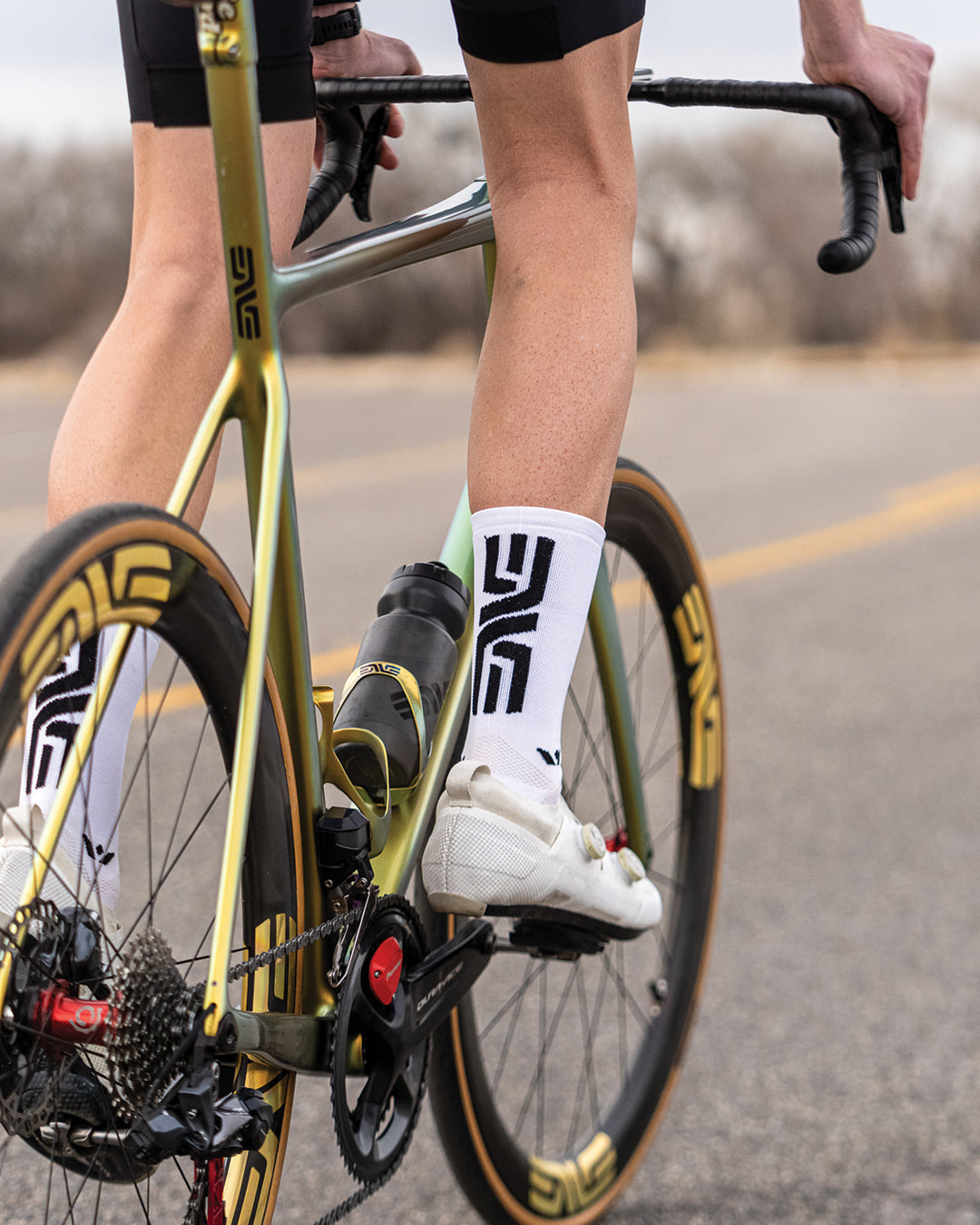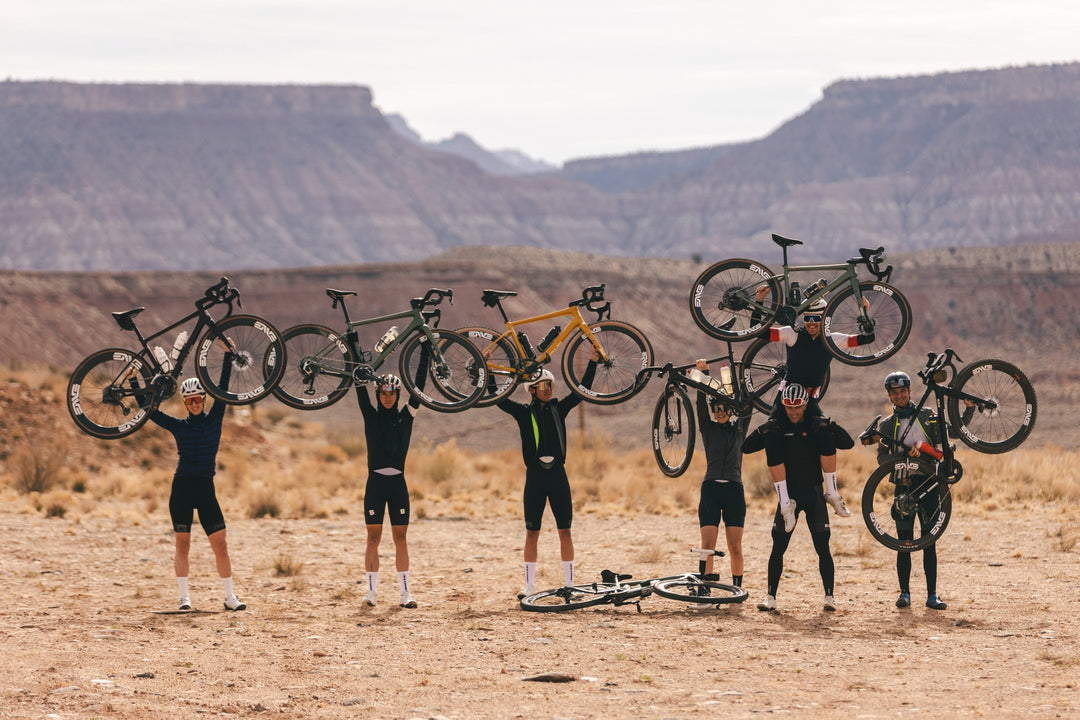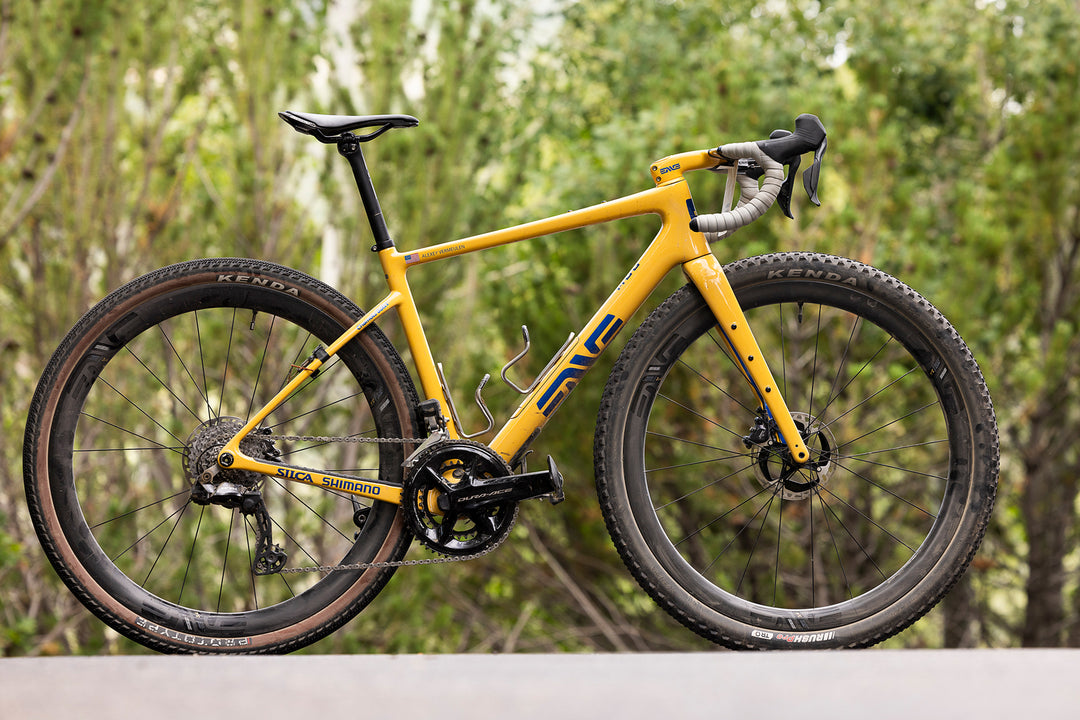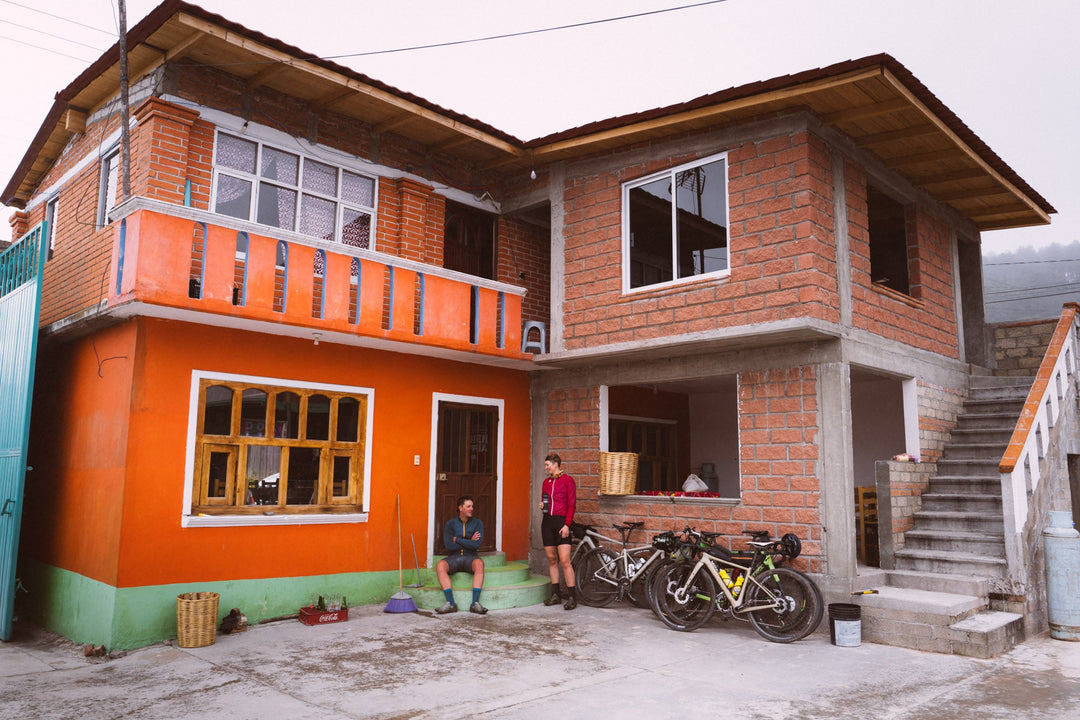A Triathlete’s Guide To Gravel
Photos by Mark Sampson
Gravel riding and racing continue to grow each year by attracting cyclists from other segments, making it a melting pot of road riders, mountain bikers, cross racers, and now more than ever, triathletes. The reasons why we see so many road riders and mountain bikes opting for gravel events is fairly clear, but at first glance the appeal of gravel for a triathlete is a little muddier until you start to pull back the layers then you realize that an IRONMAN triathlon and something like Dirty Kanza might not be quite as different as one might think. Triathletes already have the endurance conditioning needed for gravel events, in addition to understanding the pacing and fueling for what can sometimes be 8+ hours in the saddle, then add in the community environment that is the backbone of the gravel scene, and it’s much easier to see how the segment is appealing.
Top-5 Kona finisher James Cunnama adds gravel riding to his schedule in order to mix up the routine, and he even recently threw in a multi-day adventure through the backcountry of South Africa for a change of pace. Ben Hoffman and Heather Jackson are two more triathlon pros that can often be found trading their aero tri bikes for a gravel experience.

“To me, the draw of gravel racing for triathletes can be distilled down to a few key elements: adventure, community, nature, and security”, Ben Hoffman said. “While full-on mountain biking can be a reach for a triathlete looking to go off-road, gravel can be the perfect introduction to exploring roads less traveled by vehicles, and courses that reignite and emphasize a connection with the natural environment. There is still a deep sense of camaraderie and connectedness to the other athletes, and it presents a refreshing new challenge without the same Type-A aspects you sometimes find in on-road tri. Finally, the authenticity and purity of the events are still intact, having that pleasant rawness that sometimes gets watered down or eliminated completely in other races.”
THE SETUP



For those looking to get into gravel riding, there are a few equipment considerations. Obviously, finding a bike or frameset is the first step, and there are a number of good options available. Going with a bike that can accommodate 40c tires at the minimum is highly recommended, and brands like Open, Orbea, Salsa, Why Cycles and many more offer just that. From there, getting the rest of the setup dialed to deliver reliability and ride confidence is essential in preparing for a positive entry into gravel.
RIDE FLAT FREE
Flat tires suck. The hassle of changing a flat on the side of a trail or dirt road is frustrating enough, but when it happens in a race it can easily leave you off the back, making it all the worse. Initially, gravel riders just figured flat tires were part of the deal, considering pinging against rocks on a tire with much less air volume than a mountain bike can often lead to pinch flats, even with tubeless tires. That was until we released the G23 and G27 wheelsets at Dirty Kanza last year, which are specifically designed to prevent flats by employing the patent pending Wide Hookless Bead technology derived from our M Series mountain bike line. This technology has proven to deliver flat free performance at some of the most challenging gravel events on the calendar.
The G Series wheels are not road wheels or mountain bike wheels simply re-labeled, they are designed from the ground up to deliver the exact needs of the segment. That means they have a greater impact resistance than our SES wheel line, yet are more compliant than the M Series mountain line in order to deliver the right balance of ride quality, durability, and low weight. When it comes to the appropriate tire setup, keep in mind that nothing other than tubeless tires should be considered, and tire pressure is an all-important part of a proper setup. We put together a tire pressure chart to help with that, give it a look here.

CONFIDENT CONTROL
This past October ENVE introduced the G Series Gravel Handlebar and made huge strides in improving rider confidence and ride quality through the bar’s design and shaping that includes flared drops that improve control when descending in the drops. Beyond the wider stance and flare, having functional hand positions everywhere was imperative to the design. By creating a tighter bend at the transition between the tops and drops, we effectively increased usable room on the tops to allow for alternative hand positions, and to allow ample real estate when aerobars are mounted. Additionally, we reduced the cross-section of the drops by 1 mm compared to our Road and Aero Handlebar in order to achieve a higher level of compliance for long days on rough roads. In all, it is a more comfortable handlebar that offers greater control for nearly every riding situation.
OUR FAVORITE EVENTS
We’ve done our homework on gravel events and what an ideal bike setup might look like for the degree of gravel difficulty you might find at some of the more popular races on the calendar. Give our Gravel Guide a read for more insight into events, in addition to equipment recommendations. Here are a handful of events where we’ll be this year.
THE BELGIAN WAFFLE RIDE, MAY 5TH
Even though the BWR isn’t exactly a gravel event, the 135-mile course offers up approximately 40 miles of dirt in varying degrees of difficulty. The San Diego based event has been around for eight editions and continues to pull athletes from all disciplines in the sport who are looking for one of the biggest one-day challenges they can do on a bike.
https://www.belgianwaffleride.bike
DIRTY KANZA, JUNE 1ST
The event that helped make gravel riding mainstream, Dirty Kanza is also the hardest event to get into. Held in Emporia, Kansas, DK is without a doubt the most notable gravel event on the planet and finishing the 200-mile route has become a rite of passage. It’s one of the least technical events out there and is continuing to see an influx of triathletes each year. Aerobars are a common sight and have a real advantage given the event’s distance, wind, and rolling terrain.
https://www.dirtykanza.com
CRUSHER IN THE TUSHAR, JULY 13TH
If climbing is your thing, then the Crusher will not disappoint. With 10,000 feet of vert in 69 miles, the route is one of the most challenging out there mile for mile, but the scenery of Utah’s Tushar Mountains and the overall atmosphere is second to none. Although nothing on the route would be considered technical, the descent around midway allows you reach 40+ mph speeds on washboard gravel roads if you so choose.
https://www.tusharcrusher.com
REBECCA’S PRIVATE IDAHO, AUGUST 29TH – SEPTEMBER 1ST
One of the only gravel stage races on the calendar, the Ketchum, Idaho, event that was founded by endurance star Rebecca Rusch is one of our very favorite events to attend each year. The finale, a 90-mile day in the Sawtooth Mountains, offers big views and wide open dirt roads that both racer and enthusiast can equally enjoy.
www.rebeccasprivateidaho.com








